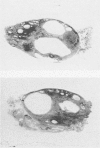Abstract
Nine sexually mature intact grade does were injected intramuscularly with testosterone propionate and subsequent plasma steroid concentrations determined and male-like behavior recorded. The does received either 100 mg testosterone propionate every three days for six treatments, total dose 600 mg (N = 5); 50 mg testosterone propionate daily for eighteen days, total dose 900 mg (N = 2) or 10 mg testosterone propionate daily for eighteen days, total dose 180 mg (N = 2). The treatments induced male-like sex behavior, the intensity of which was related to the dose of exogenous testosterone used, the regimen of administration, and the plasma levels of testosterone. Exogenous testosterone treatment had minimal effect on the subsequent reproductive activity of the does.
Full text
PDF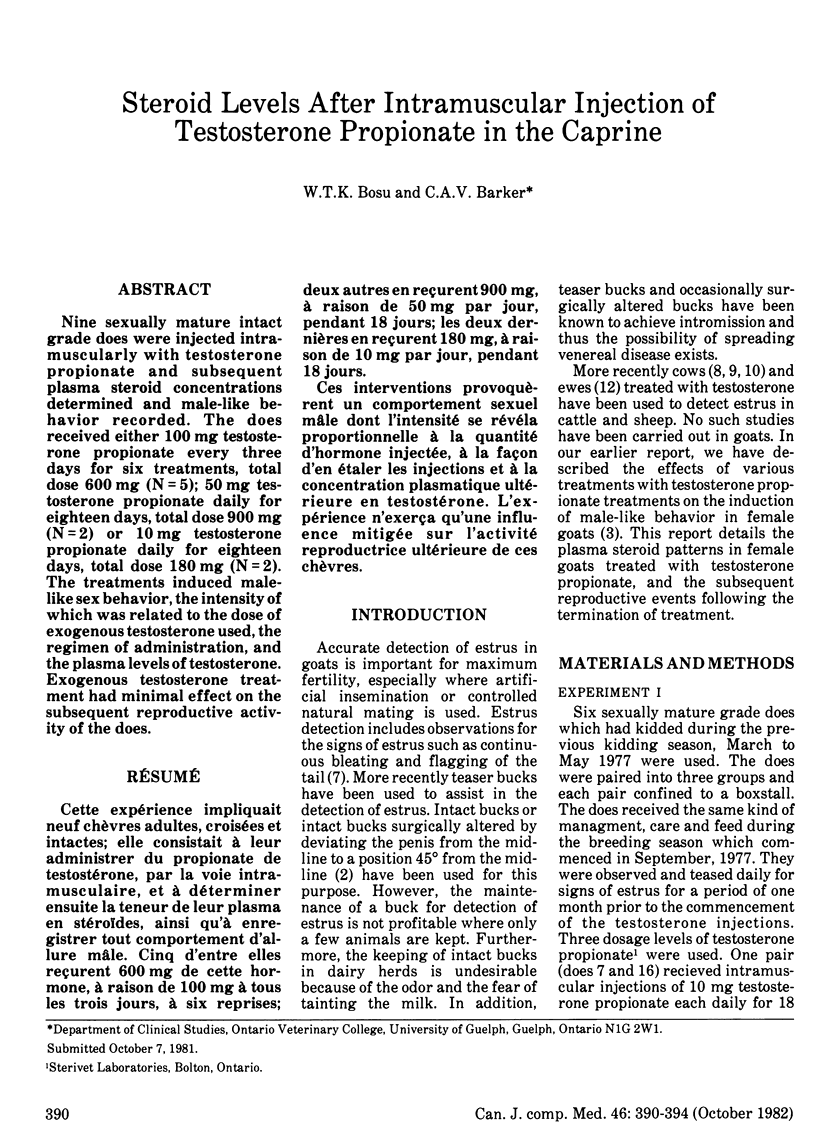

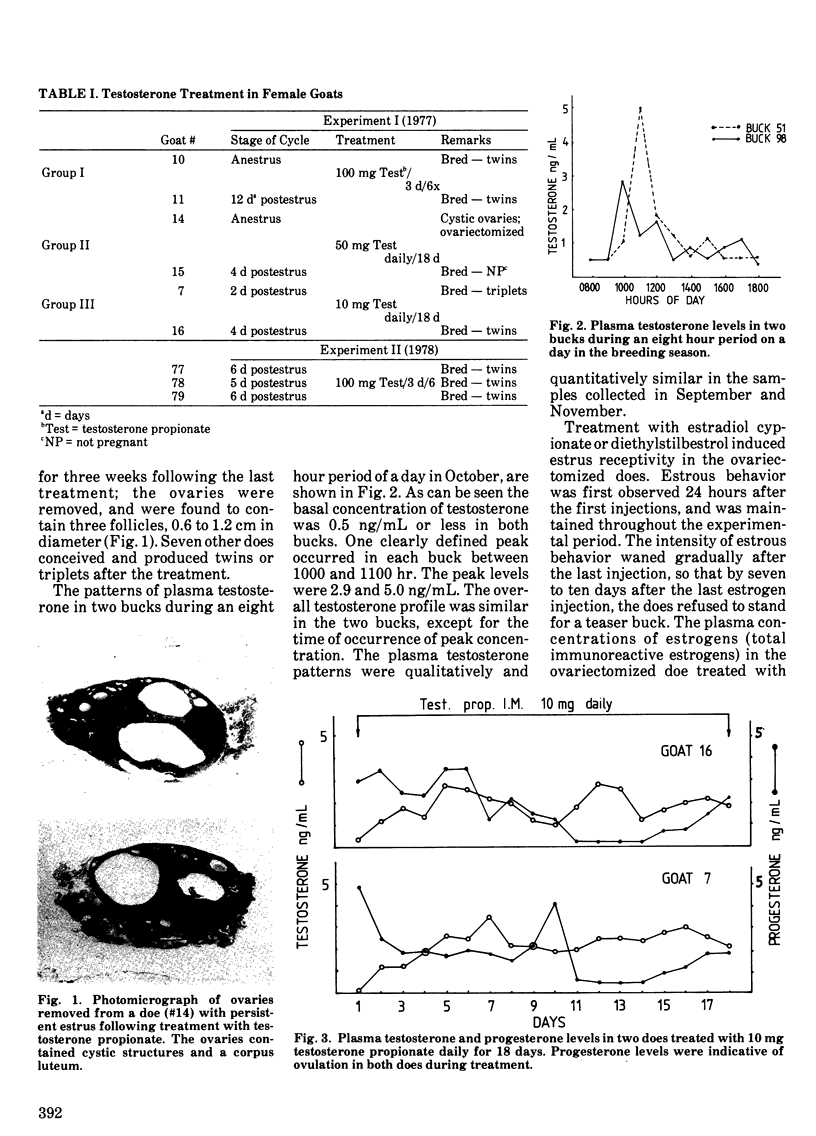
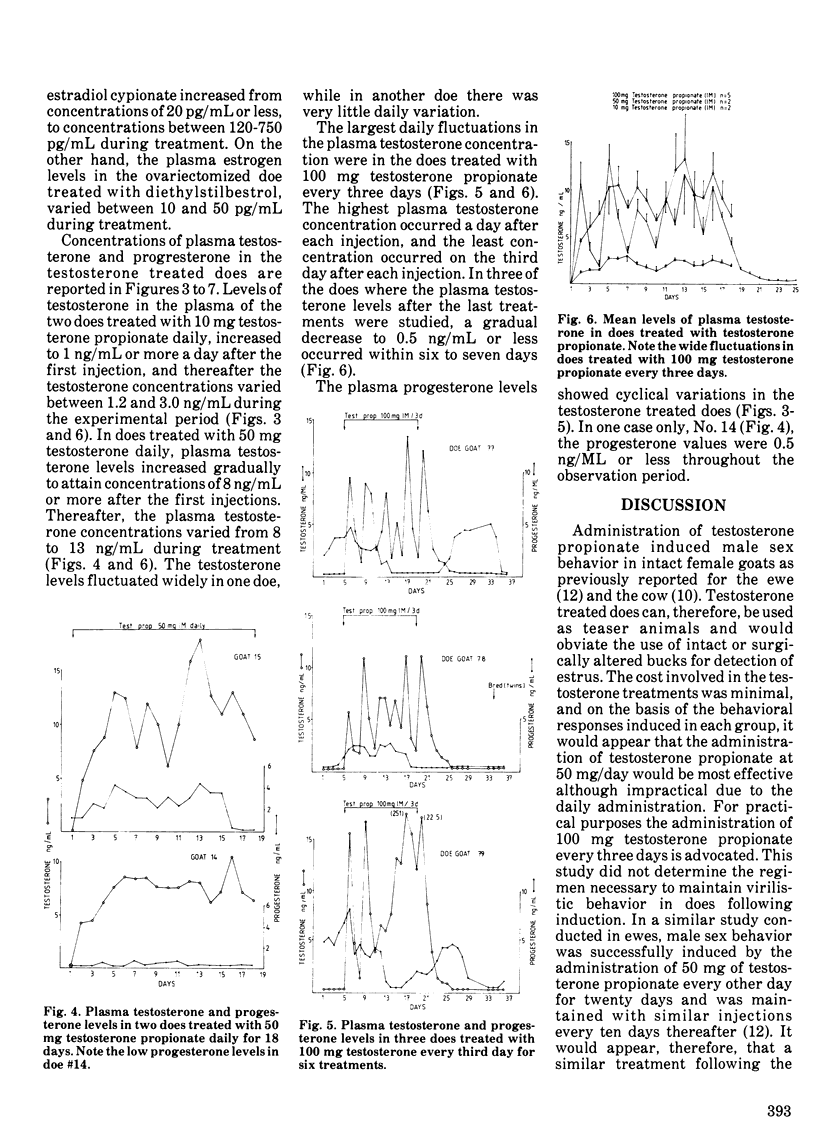
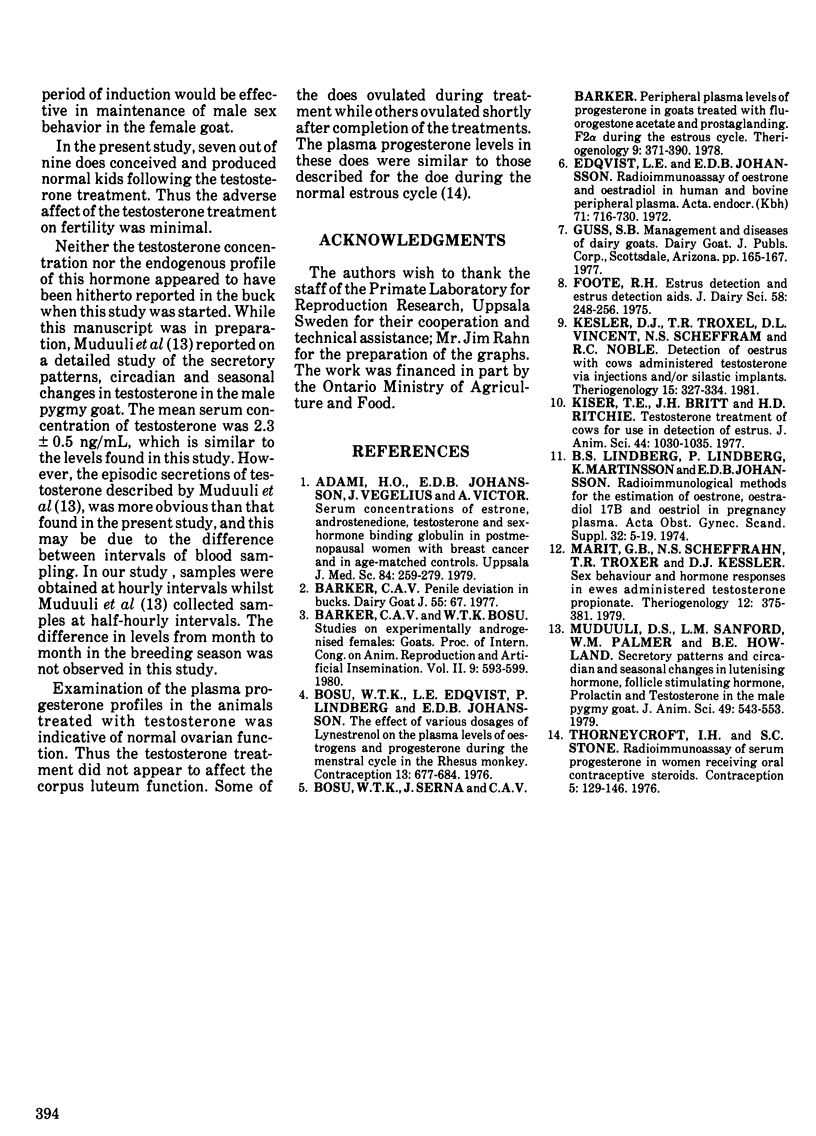
Images in this article
Selected References
These references are in PubMed. This may not be the complete list of references from this article.
- Bosu W. T., Edqvist L. E., Lindberg P., Martinsson K., Johansson E. D. The effect of various dosages of lynestrenol on the plasma levels of oestrogens and progesterone during the menstrual cycle in the rhesus monkey. Contraception. 1976 Jun;13(6):677–684. doi: 10.1016/0010-7824(76)90119-0. [DOI] [PubMed] [Google Scholar]
- Edqvist L. E., Johansson E. D. Radioimmunoassay of oestrone and oestradiol in human and bovine peripheral plasma. Acta Endocrinol (Copenh) 1972 Dec;71(4):716–730. doi: 10.1530/acta.0.0710716. [DOI] [PubMed] [Google Scholar]
- Foote R. H. Estrus detection and estrus detection aids. J Dairy Sci. 1975 Feb;58(2):248–256. doi: 10.3168/jds.S0022-0302(75)84555-3. [DOI] [PubMed] [Google Scholar]
- Kesler D. J., Troxel T. R., Vincent D. L., Scheffrahn N. S., Noble R. C. Detection of estrus with cows administered testosterone via injections and/or silastic implants. Theriogenology. 1981 Mar;15(3):327–334. doi: 10.1016/0093-691x(81)90054-6. [DOI] [PubMed] [Google Scholar]
- Kiser T. E., Britt J. H., Ritchie H. D. Testosterone treatment of cows for use in detection of estrus. J Anim Sci. 1977 Jun;44(6):1030–1035. doi: 10.2527/jas1977.4461030x. [DOI] [PubMed] [Google Scholar]
- Lindberg B. S., Lindberg P., Martinsson K., Johansson E. D. Radioimmunological methods for the estimation of oestrone, oestradiol-17beta and oestriol in pregnancy plasma. Acta Obstet Gynecol Scand Suppl. 1974;32(0):5–19. doi: 10.3109/00016347409156389. [DOI] [PubMed] [Google Scholar]
- Muduuli D. S., Sanford L. M., Palmer W. M., Howland B. E. Secretory patterns and circadian and seasonal changes in luteinizing hormone, follicle stimulating hormone, prolactin and testosterone in the male pygmy goat. J Anim Sci. 1979 Aug;49(2):543–553. doi: 10.2527/jas1979.492543x. [DOI] [PubMed] [Google Scholar]
- Thorneycroft I. H., Stone S. C. Radioimmunoassay of serum progesterone in women receiving oral contraceptive steroids. Contraception. 1972 Feb;5(2):129–146. doi: 10.1016/0010-7824(72)90024-8. [DOI] [PubMed] [Google Scholar]



